|
Aurora Gallery back to spaceweather.com |
| Summary: It's northern autumn and that means it's aurora season. The auroras on this page were triggered by a coronal mass ejection hitting Earth on Oct. 29th. The CME was hurled into space by one of the most powerful solar explosions in years--an X17-class flare from giant sunspot 486. See also the September 2003 aurora gallery. Page 1 | Page 2 | Page 3 | Page 4 | Page 5 | Page 6 | Page 7 | Page 8 Unless otherwise stated, all images are copyrighted by the photographers. |
| Photographer, Location | Images | Comments | |
|
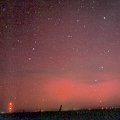
|
Todd Lindley,
near Midland, Texas , USA Oct. 29 |
#1 | Todd Lindley, Meteorologist, NWS: "At the time this photo was taken, about 0400 UT, there was only a faint white glow visible," but the photograph revealed the colors of the aurora nicely. |
|
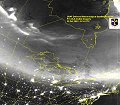
|
USAF Defense Meteorological
Satellites F15 and F16, Earth Orbit Oct. 29-30 |
#1, #2, #3 | Staff scientist Mark
D. Conner of Atmospheric & Environmental Research, Inc., forwarded
these images from two US Air Force DMSP satellites, They show auroras
in the skies aboveNorth America and Europe, and city lights on the ground.
Image credit: Meteorological
Satellite Applications Branch, AF
Weather |
|
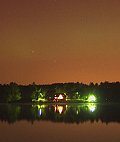
|
Jim Reed,
Lake Wateree, South Carolina,
USA Oct. 30 |
#1, #2, #3 | Photo details: Nikon D100, 21mm lens (14mm actual), f/2.8, exposed for 18 seconds, ISO 800. |
|
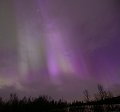
|
Lionel Bernardi,
Tromsø, Norway, USA Oct. 29 |
#1, #2, #3 | "It was my first multi-colored Northern Lights, there were no words to describe what I felt except primal joyous cheers and grunts! Awesome and humbling at the same time," says Lionel Bernardi. Photo details: Canon EOS1-DS with a 24mm at F/D 2.8 in 15s, 400 ASA. |
|
|
Lauri
Kangas, Caledon, Ontario, Canada Oct. 29-30 |
#1,
#2, more |
L. Kangas: "It seems like it has been perpetually cloudy in Southern Ontario for the last few weeks. It's agonizing when you know that there is a potential for Aurora but the skies are overcast. My wife and I did a brief "Star Dance" to bring in clear skies and it worked!!! Tonight, it cleared briefly and what a beautiful show! Photo Details: Nikon D100 Digital SLR, ISO 200 to 320, 20 second exposures with noise reduction, 28 mm lens at f/2.8." |
|
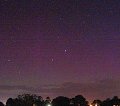
|
Lindsay
Knowles, Pakenham, Victoria, Australia Oct. 30 |
#1 | none |
|
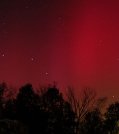
|
Vic
Winter, near Warrensburg, Missouri, USA Oct. 30 |
#1 | V. Winter: "Shot with a Nikon D-100 digital camera, 16mm lens at f2.8 and a 30 second time exposure. The first wave of aurora appeared between 01 and 02 hours UT. A second wave hit about 04 hours UT and had many red spikes with green curtains below." |
|

|
Barry Kierstein,
Lyndeborough, New Hampshire Oct. 30 |
#1, #2, #3 | none |
|

|
Dr
Russell Cockman, Scotland Oct. 30 |
#1, #2, #3, #4, more | R. Cockman: "In a word...fantastic! The statue in two of these pictures is Sir David Stirling. Images taken through a Nikon CoolPix 4500." |
|
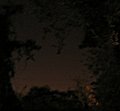
|
Josh
Smick, South Carolina, USA Oct. 30 |
#1 | J. Smick: "I thought it was just the city lights at first on the horizon through the trees, but the faint redness began to sort of drift like a cloud, and there aren't any clouds in the sky. While not spectacular, this is not something that is visible in South Carolina very often. Shame that I couldn't be in a darker area to capture the faint red glow. 5 second exposure with an Olympus C4040." |

